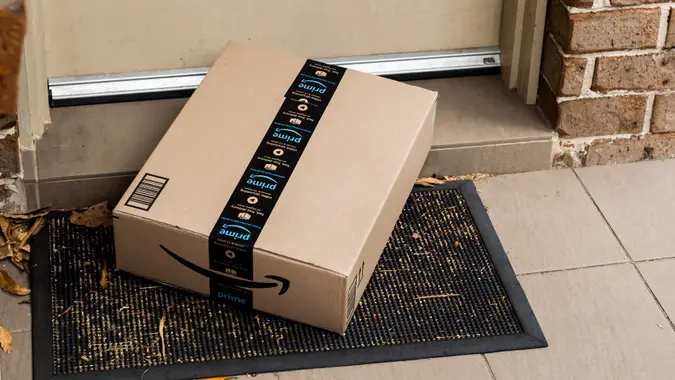Food Stamps: Fraud and Theft Are on the Rise — How Can You Prevent Them?

Commitment to Our Readers
GOBankingRates' editorial team is committed to bringing you unbiased reviews and information. We use data-driven methodologies to evaluate financial products and services - our reviews and ratings are not influenced by advertisers. You can read more about our editorial guidelines and our products and services review methodology.

20 Years
Helping You Live Richer

Reviewed
by Experts

Trusted by
Millions of Readers
Fraud and theft involving food stamps have become so rampant in recent months that some recipients want to hold government agencies legally responsible when benefits are stolen. Among the complaints is that the food assistance program doesn’t have enough safeguards in place to prevent fraud.
A class-action lawsuit was recently filed against the Massachusetts Department of Transitional Assistance — the agency that oversees the state’s food-stamp program — because it wouldn’t reimburse fraud victims for stolen benefits, CBS News reported.
One plaintiff in the case was the victim of “skimming,” in which the thief uses a device to steal the card number and PIN off of someone else’s electronic benefits payment card.
EBT cards are used to pay for Supplemental Nutrition Assistance Program benefits, formerly known as food stamps. The cards are designed to work like debit cards. However, they don’t have the same built-in protections you will find with bank-issued debit or credit cards.
A rise in skimming and other scams involving SNAP benefits has raised questions about who should be held responsible for stolen benefits — the victims, or the state agencies that administer the federal program. For now, victims are taking the financial hit, according to the lawsuit, which was filed by the Massachusetts Law Reform Institute.
“[Skimming] extends across the country,” MLRI attorney Betsy Gwin told CBS News. “The difference we see is the lack of federal protections for EBT users.”
Skimming is just one of the ways SNAP beneficiaries have benefits stolen. Another popular scam is phishing, in which criminals send fraudulent messages that look like they’re coming from a reputable source. The U.S. Department of Agriculture, which runs SNAP at the federal level, said criminals are posing as SNAP case workers to try to obtain recipients’ EBT card information.
In October, the USDA issued a warning about skimming and phishing scams. It also offered the following tips on what you can do to avoid theft and fraud:
- Keep your PIN secret. Don’t share it with anyone outside your household, and cover the keypad when you enter your PIN on a machine. You also should change your PIN frequently.
- Check your EBT account regularly for unauthorized charges. If you notice any unfamiliar charges, change your PIN immediately to stop the thief from making any new purchases.
- Double-check card reading machines. Make sure there’s nothing suspicious overlaid or attached to the card swiper or the keypad. Overlays can be difficult to detect but are often bigger than the original machine and might also hide parts of the machine.
If you believe you’ve been the victim of a skimming or phishing scam, contact your local SNAP office immediately. You also can report SNAP fraud by state on the USDA’s fraud page.
Meanwhile, take the time to research your state’s refund policy, Forbes advised. If you live in a state that covers stolen benefits, you’ll need to follow its directions for reporting theft. For example, in California beneficiaries can report stolen EBT cards to the EBT customer service helpline, file a police report and fill out a theft report.
More From GOBankingRates
 Written by
Written by  Edited by
Edited by 

























